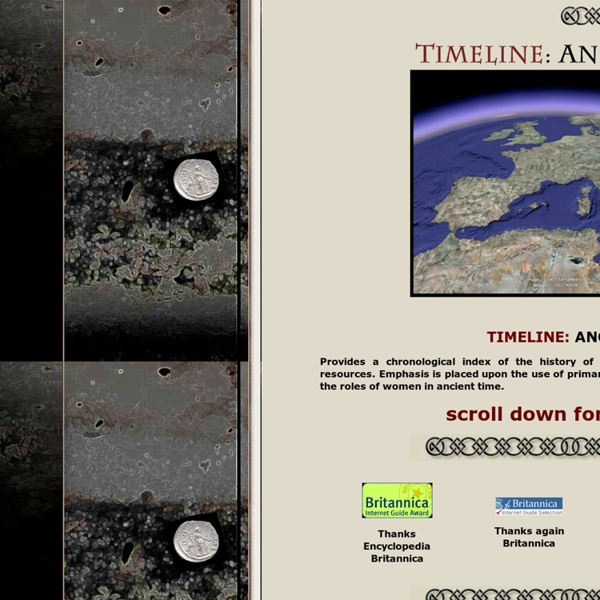How to Create a Timeline in Excel | Free Timeline Template
There are many ways to create a timeline in Excel. Some methods use drawing tools or bar charts, as in my other timeline examples. Another popular method, especially for project timelines, is to use a gantt chart. Advertisement The technique explained on this page is particularly useful for creating historical timelines and project timelines, as well as genealogical timelines that highlight events in a person's life. Figure 1: An Excel chart showing an example timeline. The template has improved over time through feedback from many users. Figure 2: Timeline with images and a little formatting. If you want to start creating your own timelines right away, you can download the Excel timeline template. Excel Timeline Template Buy Nowvia ClickBank.net Required: Excel 2010 or later 60-DAY MONEY-BACK Guarantee Try it out! "No installation, no macros, no hidden formulas, no hidden worksheets, no VBA - just a simple spreadsheet" Template Details License: Private Use Support Visit Support Page Description
Frise historique multimedia
L'idée européenne plonge ses racines dans l'antiquité gréco-romaine et a traversé toute l'histoire du continent. Dès le début du 20e siècle, des esprits visionnaires tentent d'alerter leurs contemporains sur la nécessité de s'unir pour mettre fin aux conflits entre les nations. Après 1945, les différentes tentatives de rapprochement entre les Etats d'Europe de l'Ouest culminent avec la création de la Communauté européenne du charbon et de l'acier. La construction de l'Union européenne est alors à ses débuts... Au milieu du 20e siècle, le bilan désastreux des deux guerres mondiales a poussé les nations européennes à s'unir pour empêcher de nouveaux conflits et faire face aux défis futurs. La déclaration Schuman du 9 mai 1950 est considérée comme le point de départ de la construction européenne. Ensuite, en 1999, les Etats membres font un pas de plus vers une véritable union monétaire en adoptant l'euro qui entrera en circulation trois ans plus tard.
The National Gallery, London: Western European painting 1250–1900
Food Timeline: food history & vintage recipes
Frises
Une critique, une réaction, un conseil... Je suis preneur ! duronquarre@wanadoo.frve Page mise en ligne en mai 2006, dernière actualisation en septembre 2012. Frises historiques (25 documents à télécharger) Générale Télécharger la frise générale (jpg 107 ko) La Préhistoire et l'Antiquité Télécharger la frise n°1 (jpg 84 ko) Télécharger la frise n°1 (avec photos) (jpg 89 ko) Clic droit "enregistrer l'image sous" (jpg 233 ko) Clic droit "enregistrer l'image sous" (jpg 265 ko) Le Moyen-Age Télécharger la frise n° 2 (jpg 90 ko) Télécharger la frise n° 2 (avec photos) (jpg 102 ko) Clic droit "enregistrer l'image sous" (jpg 273 ko) Les temps modernes et la Révolution Télécharger la frise n° 3 (jpg 81 ko) Télécharger la frise n° 3bis (jpg 94 ko) Clic droit "enregistrer l'image sous" (jpg 130 ko) Le XIXe siècle Télécharger la frise n° 4 (jpg 85 ko) Télécharger la frise n° 2 (avec photos) (jpg 88 ko) Clic droit "enregistrer l'image sous" (jpg 96 ko) Le XXe siècle Télécharger la frise n° 5 (jpg 81 ko)
Introduction: Human Evolution
Read full article Continue reading page |1|2|3 The incredible story of our evolution from ape ancestors spans 6 million years or more, and features the acquirement of traits from bipedal walking, large brains, hairlessness, tool-making, hunting and harnessing fire, to the more recent development of language, art, culture and civilisation. Darwin's The Origin of Species, published in 1859, suggested that humans were descended from African apes. However, no fossils of our ancestors were discovered in Africa until 1924, when Raymond Dart dug up the "Taung child" - a 3-million to 4 million-year-old Australopithecine. Over the last century, many spectacular discoveries have shed light on the history of the human family. Walking tall Humans are really just a peculiar African ape - we share about 98% of our DNA with chimpanzees, our closest living relatives. At around 6 million years ago, the first apes to walk on two legs appear in the fossil records. Tooled up Modern lookers Promoted Stories
ATLAS HISTORIQUE - Cartographie & histoire
Origins of the Cold War 1945-49
FOUR causes of the Cold War [BARE]. NINE events which caused the Cold War. FOUR decisions made at the Yalta Conference. TWO decisions and three disagreements at the Potsdam conference. The ‘salami tactics’ that brought Communists to power in Eastern Europe FIVE causes [CABAN] and FOUR results [CENA] of the Berlin crisis, 1948–9.



